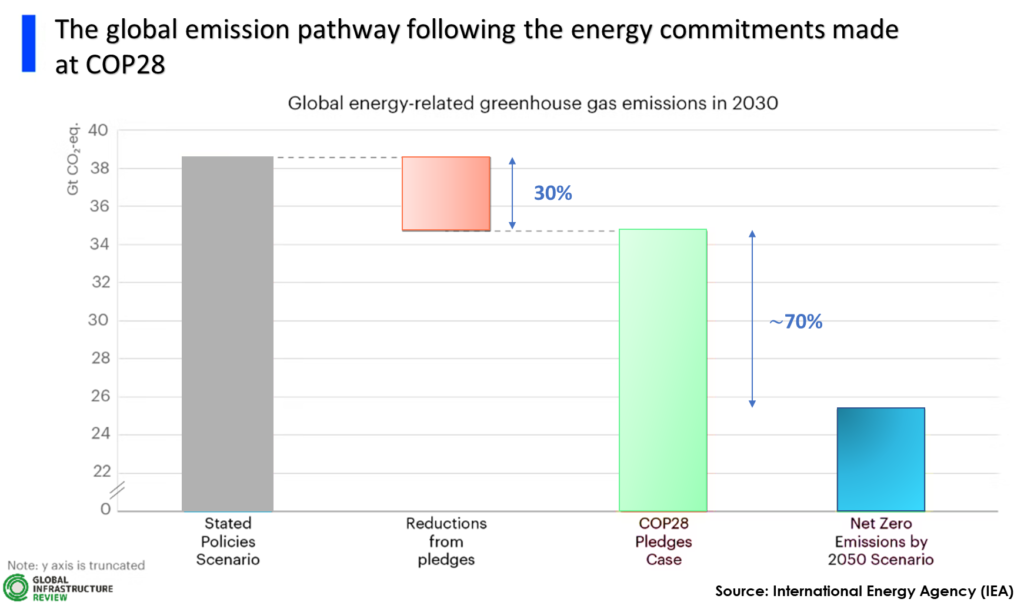The recently concluded COP28 in Dubai brought renewed momentum to the global climate action agenda.
The conference placed a significant focus on accelerating progress, and it is noteworthy that the negotiations resulted in substantial commitments and declarations, with pledges surpassing $85 billion for climate action. Here’s a summary of notable commitments:
Loss and Damage Fund:
- The launch of a “loss and damage” fund to help vulnerable countries cope with the escalating costs and impacts of climate-related disasters. The fund garnered approximately $792 million in pledges.
Renewable Energy and Energy Efficiency:
- A noteworthy commitment from 132 countries to triple global renewable energy capacity by 2030 and double the annual rate of energy efficiency improvements.
Fossil Fuels:
- The Powering Past Coal Alliance (PPCA) gained over 10 new members, including the US and the UAE, with over 80% of OECD and EU countries now committed to the alliance.
Nuclear Energy:
- More than 20 countries, led by the US, advocated for tripling the world’s nuclear energy capacity by 2050, emphasizing its low greenhouse gas emissions.
Food and Farming:
- Nearly 160 countries agreed to prioritize food and agriculture systems in their national climate plans, acknowledging their role in generating a third of human-made greenhouse gases.
Health at the Heart of Climate Action:
- Over 140 countries signed a declaration to prioritize health in climate action, urging governments to address climate-related health impacts such as extreme heat, air pollution, and infectious diseases.
Cooling Pledge:
- More than 60 nations committed to reducing emissions from energy-intensive cooling equipment by at least 68% globally by 2050, aiming to provide sustainable cooling measures for 3.5 billion people facing rising temperatures.
UAE Climate Investment Fund:
- The UAE announced a $30 billion investment in a new private climate fund called Alterra, focusing on climate projects in the developing world and aiming to mobilize $250 billion in investments by 2030.
The IEA emphasized that the Energy pledges might contribute to a 30% reduction in emissions by 2030, closing a substantial portion of the emissions gap required to align with the goal of limiting global warming to 1.5°C.
